Table of Contents
AYN RAND is the author of Atlas Shrugged, philosophically the most challenging bestseller of its time. Her first novel, We the Living, was published in 1936, followed by Anthem. With the publication of The Fountainhead, she achieved a spectacular and enduring success. Rands unique philosophy, Objectivism, has gained a worldwide audience. The fundamentals of her philosophy are set forth in such books as Introduction to Objectivist Epistemology, The Virtue of Selfishness, Capitalism: The Unknown Ideal, and The Romantic Manifesto. Journals of Ayn Rand and The Ayn Rand Reader are available in Plume editions. Ayn Rand died in 1982.
LEONARD PEIKOFF is universally recognized as the worlds premier Ayn Rand scholar. He worked closely with her for thirty years and was designated by Rand as the heir to her estate. He has taught philosophy at Hunter College, New York University, and the Polytechnic Institute of Brooklyn. Peikoff is the author of The Ominous Parallels and Objectivism: The Philosophy of Ayn Rand. For further information, go to his website: ALSHOW.com.
TORE BOECKMANN is an editor and publisher living in Norway. He has written on Ayn Rands literary esthetics for The Intellectual Activist. His mystery fiction, originally published in Alfred Hitchcocks Mystery Magazine, has been anthologized in several languages.
PLUME
Published by the Penguin Group
Penguin Group (USA) Inc., 375 Hudson Street, New York, New York 10014, U.S.A.
Penguin Group (Canada), 90 Eglinton Avenue East, Suite 700, Toronto,
Ontario, Canada M4P 2Y3 (a division of Pearson Penguin Canada Inc.)
Penguin Books Ltd., 80 Strand, London WC2R ORL, England
Penguin Ireland, 25 St. Stephens Green, Dublin 2, Ireland
(a division of Penguin Books Ltd.)
Penguin Group (Australia), 250 Camberwell Road, Camberwell, Victoria 3124, Australia (a division of Pearson Australia Group Pty. Ltd.)
Penguin Books India Pvt. Ltd., 11 Community Centre, Panchsheel Park,
New Delhi - 110 017, India
Penguin Group (NZ), 67 Apollo Drive, Rosedale, North Shore 0632, New Zealand (a division of Pearson New Zealand Ltd.)
Penguin Books (South Africa) (Pty.) Ltd., 24 Sturdee Avenue,
Rosebank, Johannesburg 2196, South Africa
Penguin Books Ltd., Registered Offices: 80 Strand, London WC2R ORL, England
First published by Plume, a member of Penguin Group (USA) Inc.
First Printing, January 2000
Copyright Estate of Ayn Rand, 2000
All rights reserved

REGISTERED TRADEMARKMARCA REGISTRADA
Library of Congress Cataloging- in- Publication Data
Rand, Ayn.
The art of fiction: a guide for writers and readers / Ayn Rand; edited by
Tore Boeckmann; introduction by Leonard Peikoff. p. cm.
Includes index.
eISBN : 978-1-101-13723-9
1. FictionAuthorship. I. Boeckmann, Tore. II. Title.
PN3355.R26 2000
808.3dc21
99-35588
CIP
Set in Goudy
Without limiting the rights under copyright reserved above, no part of this publication may be reproduced, stored in or introduced into a retrieval system, or transmitted, in any form, or by an means (electronic, mechanical, photocopying, recording, or otherwise), without the prior written permission of both the copyright owner and the above publisher of this book.
BOOKS ARE AVAILABLE AT QUANTITY DISCOUNTS WHEN USED TO PROMOTE PRODUCTS OR SERVICES. FOR INFORMATION PLEASE WRITE TO PREMIUM MARKETING DIVISION, PENGUIN PUT.NAM INC., 375 HUDSON STREET, NEW YORK, NY 10014.
http://us.penguingroup.com
INTRODUCTION
This book is an edited version of an informal course of lectures given by Ayn Rand in her own living room in 1958. It was the year after the publication of Atlas Shrugged, and AR was at the peak of her powers as a novelist.
She gave the course, by popular demand, to some twenty or so friends and acquaintances. She spoke extemporaneously, with only a few written notes naming the topics she meant to cover. Including questions and discussion, each of the twelve sessions lasted about four hours.
Two kinds of students attended: aspiring young fiction writers, and fiction readers from a variety of professions. These two groups are the audience to whom the present book is addressed.
The goal of the writers was obvious and practical: to learn everything possible about the problems and techniques of their craft. The readers, by contrast, of whom I was one, were there strictly as consumers; we wanted to enhance our enjoyment in reading. We wanted to know from the master what to look for in fiction and where it had come from, i.e., what had gone on behind the scenes, in the creators mind, to produce the stories we loved (or hated). We were not content to grasp a book as a finished whole; we wanted to hear AR analyze the pleasures (or misery) a book evoked, and explain by what means its effects had been achieved.
Since AR held that fiction has four essential elementstheme, plot, characterization, and stylethe lectures are organized accordingly, with the greatest emphasis on plot and style.
In regard to plot, AR identifies not only its nature and structure, but also its crucial relationships to theme and to a critical category of her own creation: plot-theme. To concretize her theory, she analyzes many plots, some invented by her for the course, explaining what makes each good or bad and by what steps the bad ones could be methodically improved.
The tour de force of the book is its discussion of style, which occupies almost one half of the text. AR analyzes lengthy passages (describing love, nature, or New York City) from a variety of authors, often one sentence at a time. By juxtaposing different authors and by rewriting selected sentences, she identifies the essentials of several antithetical literary styles, showing in the process what different wordings do to a scene (and to a reader). Writers such as Victor Hugo, Sinclair Lewis, Thomas Wolfe, and Mickey Spillane are coveredas well as AR herself. By rewriting her own sentences, she shows in startling terms how seemingly minor, even trivial, changes can utterly destroy or reverse an artistic effect.
I can only hint here at other fascinating topics between these covers. AR explains how to stock ones own subconscious and thus create ones own inspiration as a writer. She explains what to do when one is blocked, or, in her words, suffering from the squirms. She discusses drama versus melodrama; what makes a character intelligible and a characterization profound; the difference between authors who tell and those who show; the nature of proper versus sick or vicious humor; how to handle, or as reader evaluate, fantasy, tragedy, flashbacks, exposition, slang, metaphors; and much, much more.
AR was expert at philosophical detection. Although this course focuses on the principles of literature, it identifiesas AR characteristically doesthe deepest philosophic issues involved. Those unfamiliar with philosophy will be astonished to discover the extent to which abstract issuessuch as the mind-body question, or the free will-determinism controversy, or the advocacy of reason versus of faithactually influence a writer of fiction, shaping his selection of events, his method of characterization, and even his way of combining words into a sentence.


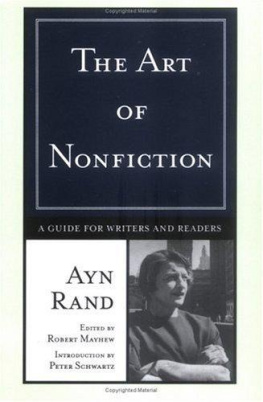
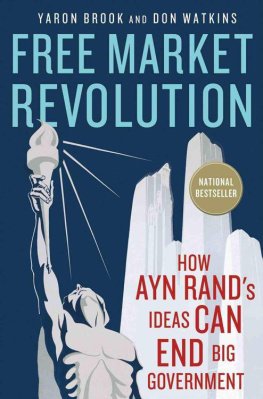
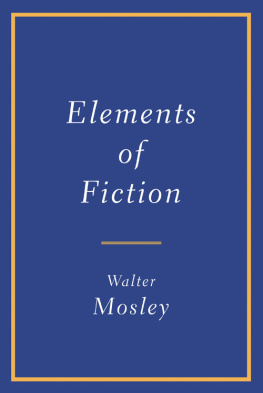
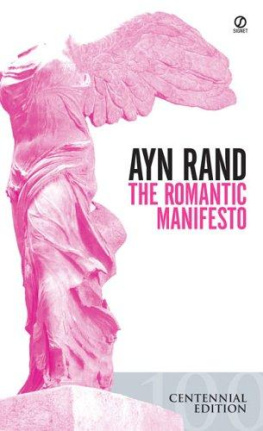
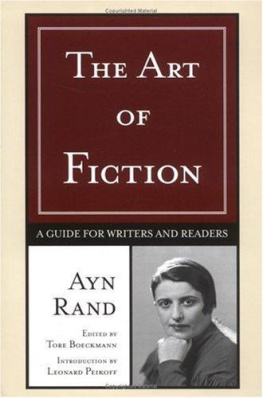
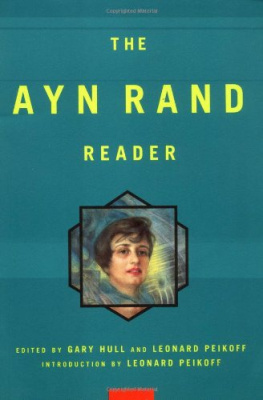
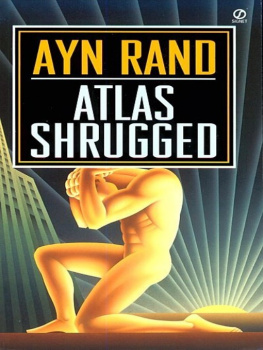

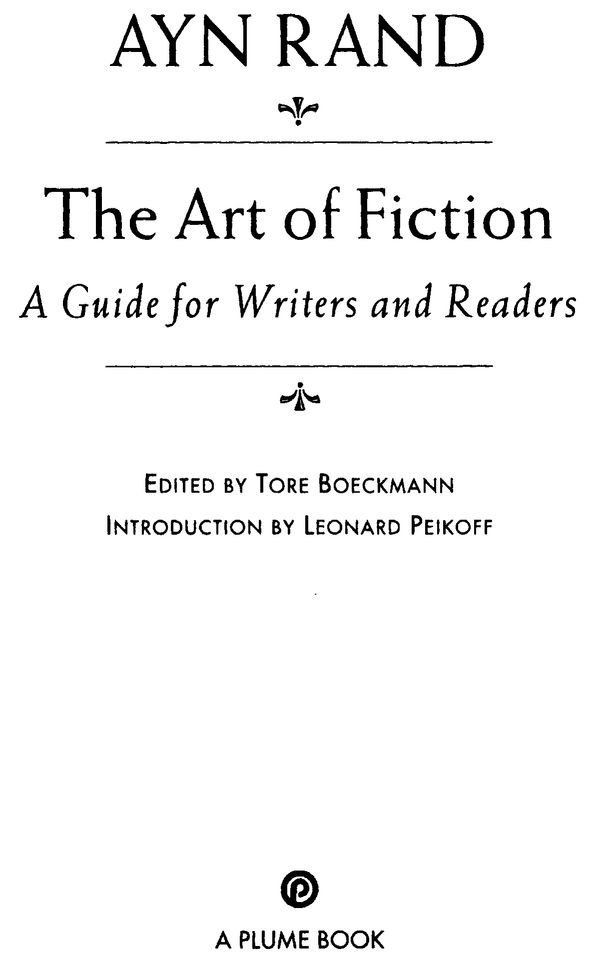
 REGISTERED TRADEMARKMARCA REGISTRADA
REGISTERED TRADEMARKMARCA REGISTRADA